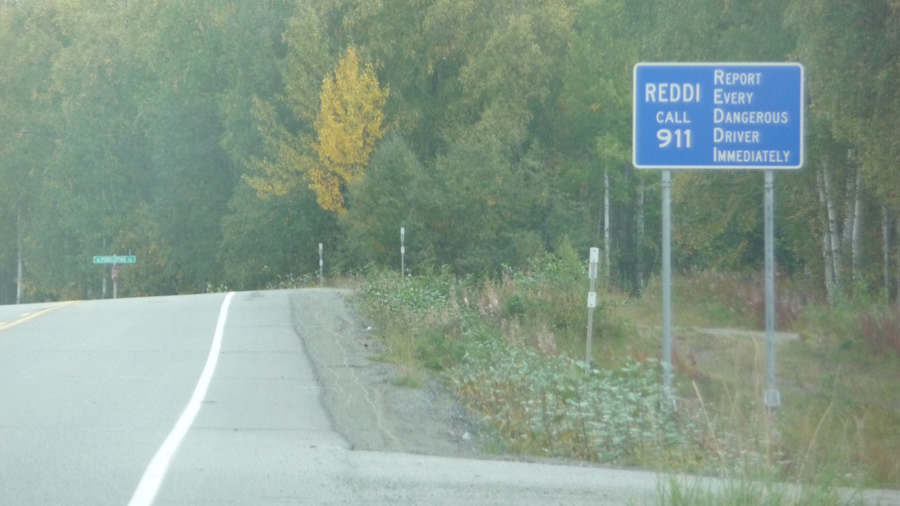Since driving Alaska’s roads can be hazardous at times, the state has put several highway safety programs in place as an effort to make the state’s roads safer for all.
Here’s what you should know about Alaska’s highway safety programs:
Report Every Dangerous Driver Immediately (REDDI)

REDDI sign on the KGB Safety Corridor. Photo by Brendan Dougherty, Alaska DOT&PF.
When people in cars or trucks drive dangerously, they are not only risking their own lives but also the lives of innocent people both in their own vehicles and in other vehicles on the road. The following are some examples of dangerous driving:
- Reckless behavior
- Intimidating, aggressive actions
- Drunk and/or drugged driving
- Fatigued driving
These are some of the signs to look out for:
- Weaving in and out of lanes
- Passing on curves and double yellow lines
- Driving with the windows down in cold weather
- Straddling the centerline
- Making wide or high speed turns out of assigned lanes
- Driving so slowly as to impede other traffic under current conditions
- Tailgating
If you believe there is a risk of death or injury as a result of someone’s dangerous driving, CALL 911 right away.
Alaska Strategic Traffic Enforcement Partnership (ASTEP)
The primary goals of the ASTEP program are to reduce deaths and injuries due to impaired drivers and to bolster compliance with Alaska’s primary seat belt law. These goals are achieved by allocating extra enforcement in regions where it’s most needed in order to clear Alaska’s roads of drunk or impaired drivers through the use of both law enforcement and traffic crash data.
The data suggests the program is working. In 2005, there were 73 traffic fatalities in Alaska, and by 2010, there were 57. In 2005, there were 5,974 non-fatal traffic injuries, and by 2008, there were 4,642.
Additionally, in 2005, 78.4% of Alaskans regularly wore seatbelts, and by 2010, that rate jumped to 86.8%.
Alaska is one of 15 states who have partnered with the National Highway Traffic Safety Administration (NHTSA) to implement the ASTEP program.
Traffic Records Program
The goals of the Traffic Records Program are as follows:
- Enhance car crash data in order to minimize the number of crashes and injuries on Alaska’s roads.
- Make sure that complete, accurate, and timely traffic data are gathered, analyzed, and provided for decision-making at the national, state, and local levels to minimize crashes, deaths, and injuries on America’s roads.
- Nurture effectively coordinated Federal leadership to get the most out of the efficiency and effectiveness of traffic safety data collection and analysis as well as the resources required to support it.
If you’ve been involved in an accident on one of Alaska’s roads through no fault of your own, you may be owed compensation. Let us see if we can help you recover it.
Call Farnsworth & Vancetoday at (907)-290-8980 to speak with an attorney about your potential case.

